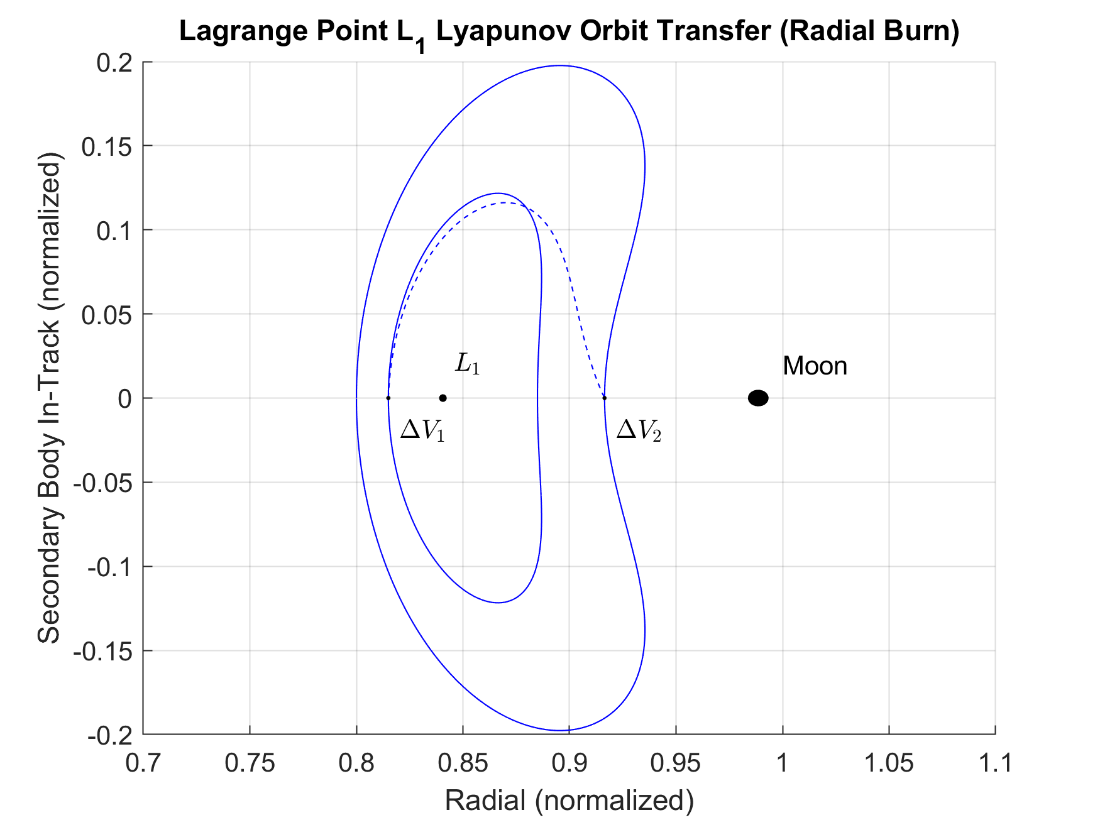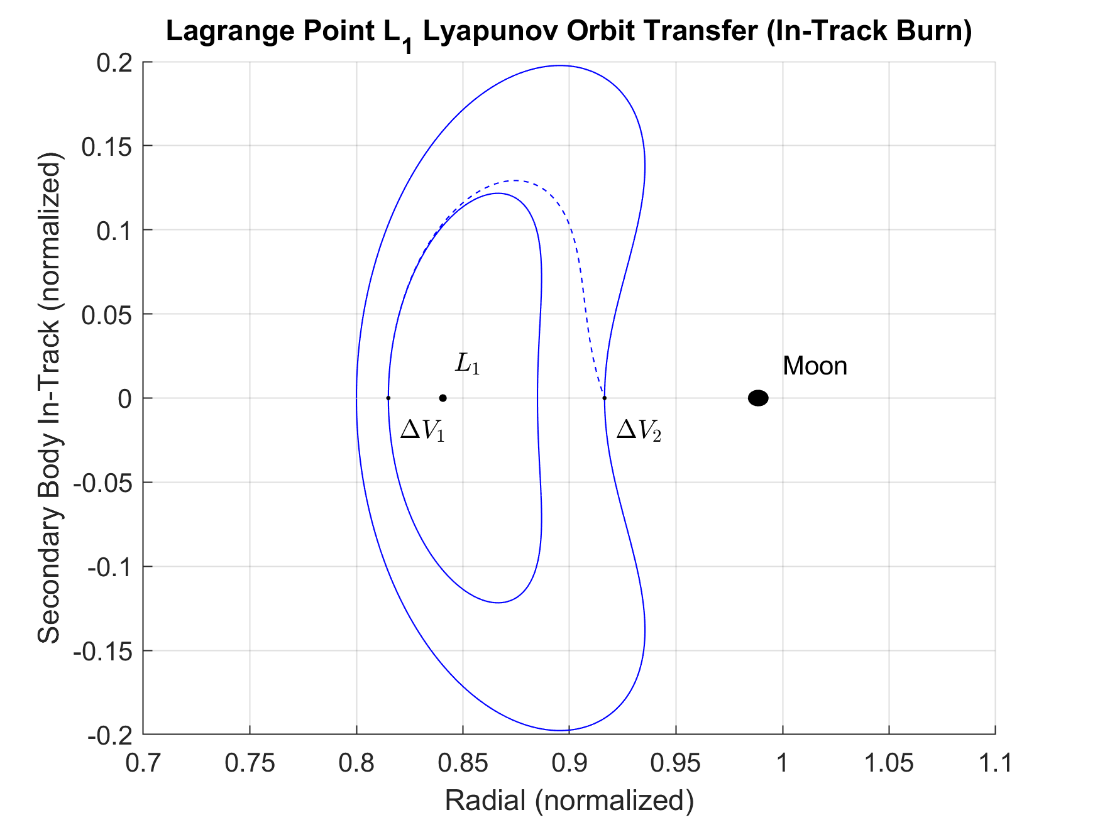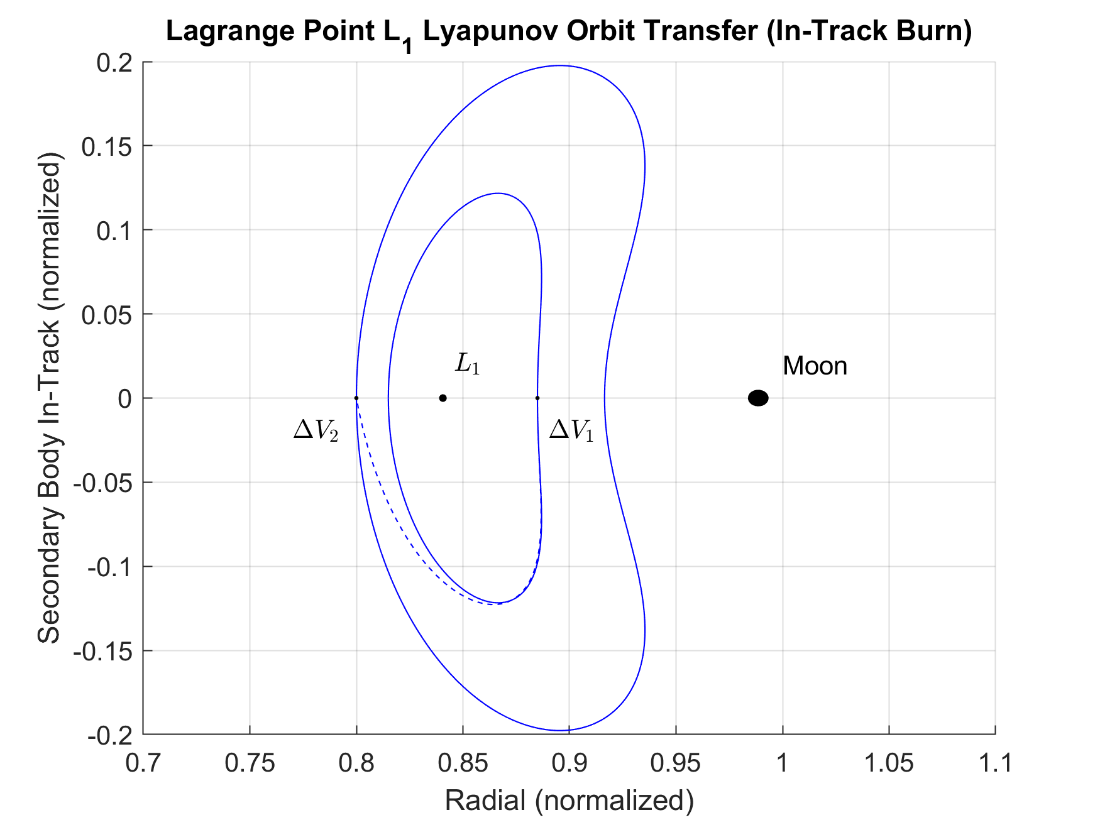Welcome to Spacetime with Brandon!
Cislunar Relative Motion Orbital Mechanics
Lyapunov Periodic Orbit Transfers
Transfers between periodic orbits can be made when a spacecraft intends to transition from one periodic orbit to another. This can become especially useful when attempting to enter a large periodic orbit from GEO as there may not be a feasible insertion trajectory within fuel limits. In some cases, it may be more fuel efficient and overall simpler if raising an orbital radius from GEO, inserting into a small periodic orbit trajectory, then gradually increasing the size of the periodic orbit to the desired size.
Below shows an example Lyapunov orbit transfer from an orbit with a perigee of 0.815 to an orbit with a perigee of 0.800. When transferring from one periodic orbit to another, there are several burn options available such as conducting an initial burn at perigee of the initial orbit and a final burn at apogee to enter the final orbit, conducting an initial burn at apogee of the initial orbit and a final burn at perigee to enter the final orbit, conducting an initial burn at perigee of the initial orbit and a final burn at perigee to enter the final orbit, or conducting an initial burn at apogee of the initial orbit and a final burn at apogee to enter the final orbit.
Perigee to Apogee Radial Burn
Below shows the first case where a transfer trajectory is initiated at the perigee of the initial orbit and the final burn occurs at the desired apogee of the final orbit as shown in Figure 10-1. In this case, the initial burn is only in the radial direction.

Figure 10-1: Periodic orbit transfer between two Lyapunov orbits by a perigee to apogee radial burn.
Perigee to Apogee In-Track Burn
Below shows the second case where a transfer trajectory is initiated at the perigee of the initial orbit and the final burn occurs at the desired apogee of the final orbit as shown in Figure 10-2. In this case, the initial burn is only in the in-track direction.

Figure 10-2: Periodic orbit transfer between two Lyapunov orbits by a perigee to apogee in-track burn.
Apogee to Perigee Radial Burn
Below shows the third case where a transfer trajectory is initiated at the apogee of the initial orbit and the final burn occurs at the desired perigee of the final orbit as shown in Figure 10-3. In this case, the initial burn is only in the radial direction.

Figure 10-3: Periodic orbit transfer between two Lyapunov orbits by an apogee to perigee radial burn.
Apogee to Perigee Radial Burn
Below shows the fourth case where a transfer trajectory is initiated at the apogee of the initial orbit and the final burn occurs at the desired perigee of the final orbit as shown in Figure 10-4. In this case, the initial burn is only in the in-track direction.

Figure 10-4: Periodic orbit transfer between two Lyapunov orbits by an apogee to perigee in-track burn.
Although conducting an in-track burn is more efficient in both the apogee and perigee initial burn cases, the transfers with the initial burn conducted at apogee are significantly more fuel-efficient.